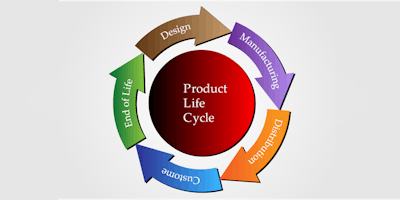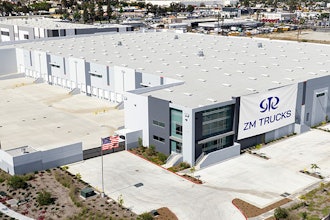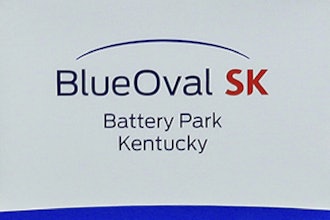
Arena Solutions
December 2016, IDC Health Insights #US40510416e
BUSINESS STRATEGY
Business Strategy: PLM for Life Science Manufacturers —
Operational Excellence Through Product
Life-Cycle Management
Michael Townsend
THIS IDC BUSINESS STRATEGY EXCERPT FEATURES: ARENA SOLUTIONS PLM
IN THIS EXCERPT
The content for this excerpt was taken directly from Business Strategy: PLM for Life Science
Manufacturers — Operational Excellence Through Product Life-Cycle Management (Doc #
US40510416). All or parts of the following sections are included in this excerpt: IDC Health Insights
Opinion, In This Study, Situation Overview, Case Study, Future Outlook, Essential Guidance,
Appendix and Learn More.
IDC HEALTH INSIGHTS OPINION
This IDC Health Insights study explores the scenarios and solutions offered by product life-cycle
management (PLM) software to life science companies. PLM has gained widespread acceptance in
many industries, first as an innovation platform for organization of engineering and research tasks and
documentation and then as an integral and crucial aspect of manufacturing and collaboration with
suppliers, sales and service teams, customers, and other stakeholders. Further:
While the life science industry as a whole may be playing catch-up to more traditional PLM
users in industries such as consumer packaged goods (CPG), automotive, aerospace, and
electronics, adoption within the medical device industry is widespread and has been prevalent
for several years. The pharmaceutical and biotech industries, which in some respects
resemble process industries such as chemical and energy more than discrete manufacturing,
are looking closely at PLM and the opportunities it offers for improving efficiency, safety, and
time to market for their own products. In addition, the unique and extensive regulatory
environment of the life science industry is moving manufacturers to look at PLM as a method
of automating regulatory filings and storage of critical product and design information as well
as sharing and collaborating with supply chain partners including material and component
suppliers, distributors, and contract manufacturing organizations (CMOs).
Previously separate processes involving quality management, document management,
inventory and warehouse processes, engineering change management, and others are being
incorporated into a PLM framework, utilizing technologies such as cloud computing, IoT, big
data and analytics, mobile devices, and even augmented reality.
It is clear that PLM is offering life science companies a framework that can improve processes,
quality, and ultimately patient safety in many ways, and that a wide variety of solutions and
expertise are available to match available PLM software and technology to the many different
needs of life science companies.
©2016 IDC Health Insights #US40510416e 2
IN THIS STUDY
To help illustrate how life science companies are approaching comprehensive innovation and
collaboration through the use of PLM software, IDC has compiled several case studies of
implementations in the life science industry, including medical devices and diagnostic equipment,
pharmaceutical manufacturing, and biotechnology production and R&D. PLM spans functions from
discovery and research to distribution and after-sales support. Several vendors of PLM software were
featured as well as consultants and service providers that have planned and implemented PLM for life
science customers.
SITUATION OVERVIEW
Product life-cycle management software has been widely adopted in many industries including
automotive, aerospace, electronics, and a wide range of industrial and consumer goods. Adoption has
been slower in the life science industry, particularly in pharmaceutical and biotechnology, because of
unique challenges in the development, testing, and regulatory environments. However, vendors of
PLM software are working together with the life science industry and service providers to move the
industry forward and realize the organizational, financial, and regulatory benefits of PLM adoption. In
this study we interviewed users of a variety of PLM systems about their experiences with several
leading vendors and service providers involved in PLM implementation.
The medical device industry, particularly in complex systems such as diagnostic imaging equipment, is
very advanced in the use of PLM, including systems utilizing IoT devices within equipment at customer
sites worldwide.
Life science customers are actively evaluating PLM systems and vendors for:
Experience in PLM implementation
Life science industry–specific products and expertise
Ease of use
Cost of ownership
Communication and collaboration with other systems and stakeholders
Automation of compliance reporting and record keeping
THE APPROACH
IDC Health Insights conducted in-depth interviews of users of a variety of PLM solutions within the life
science industry in 2016. The following case study provides illustrative examples of how life science
companies are using PLM technology to improve efficiency, collaboration, innovation, and quality
throughout the industry.
©2016 IDC Health Insights #US40510416e 3
Case Study: Arena Solutions PLM Automates FDA Submissions for Emerging
Medical Device Developer
In late 2014, a Midwestern U.S. developer and maker of innovative medical devices faced a challenge
that threatened the company's future. After a surprise audit of the company's quality systems, the ISO
13485 auditors found the paper-based quality system to be insufficient and gave the management
team six months to correct all findings and conduct a return audit. The audit team found that the
company was following documented processes but not closing out corrective actions and
nonconforming material reports routinely. Final sign offs were frequently missing or incomplete, and
there was no automated system in place to flag open cases.
The COO and founder of the medical device company decided to search for a solution that could be
implemented in time for the return audit and within the company's budget. At the time, 12 different
devices were under development at multiple sites, which indicated that a cloud-based solution would
be ideal due to the multiple remote teams collaborating on development and quality reporting efforts.
After evaluating several options, the company decided on a cloud-based Arena Solutions PLM
solution, which promised to automate the filing of FDA submissions, corrective and preventive actions
(CAPAs), and design history files (DHFs).
The medical device developer went live on the Arena PLM system only six weeks before the
scheduled return audit. In those six weeks, bills of materials (BOMs), quality document templates, and
DHFs (some containing up to 350 entries) were entered into the PLM system. When the ISO 13485
auditors returned, the team was able to conduct the audit completely within the Arena system "without
ever leaving the room," according to the COO. In addition, the internal quality team of four quality
engineers and an inspector plus a director of Quality was able to be redeployed, retaining only the
director and the inspector.
Today, remote development teams are able to log onto the PLM system on the cloud. Researchers
who prefer to record data in lab notebooks are able to scan their notebook entries directly in the device
history record (DHR). The company also uses several overseas contract manufacturers for low-
complexity, high-volume devices. The contract manufacturers "feed that data into the DHRs on the
Arena system — we know every part, component, lot number, and serial number," said the COO.
"Instead of needing to customize our quality system for Arena, we were able to configure the Arena
PLM system to match our internal processes," the COO said. He reported that for a small company like
his, the Arena PLM system "cost less than 40% of the next least expensive option" when subscribing
on a per-seat basis. Combined with the savings in automating and redeploying the quality group, the
Arena PLM system has more than paid for itself.
FUTURE OUTLOOK
The adoption of product life-cycle management in the life sciences is increasing rapidly. Cloud
computing, analytics, IoT, mobile devices, augmented reality, and other new technologies are
facilitating automation and collaboration for product development and manufacturing in ways that were
not possible even a few years ago.
Industry regulators including the FDA and EMA are appropriately demanding of manufacturers and
developers of these products, which save millions of lives and improve the quality of life of millions of
others every year. Solutions in response to industry regulations such as IDMP in Europe, serialization
©2016 IDC Health Insights #US40510416e 4
and track and trace mandated by DQSA in the United States, and other national and regional
mandates are being found in PLM implementations.
The medical device industry, particularly in complex systems such as diagnostic imaging equipment, is
very advanced in the use of PLM, including systems utilizing IoT devices within equipment at customer
sites worldwide.
In the coming years, we expect widespread adoption of PLM within life science companies, particularly
in the process-oriented pharmaceutical and biotech industries.
ESSENTIAL GUIDANCE
Life science customers should evaluate PLM systems and vendors for:
Experience with PLM implementation
Life science industry expertise
Ease of use
Cost of ownership
Communication with other systems
Collaboration with partners
Automation of compliance reporting and record keeping
Actions to Consider
Map existing and desired processes first before searching for solutions.
Consider using outside experts to assist in planning and implementation of PLM.
Ask vendors and consulting teams for customer references in life science PLM.
Consider the regulatory environment in countries where your products are designed, sold, and
used.
Evaluate PLM technology and use in other industries.
LEARN MORE
Related Research
IDC MarketScape: Worldwide Life Science Manufacturing and Supply Chain Digital
Transformation 2016 Vendor Assessment (IDC #US40510516, September 2016)
Market Analysis Perspective: Worldwide Product Life-Cycle Management Software, 2016 (IDC
#US40541616, September 2016)
Pivot Table: Worldwide Product Life-Cycle Management IT Spending Guide, Version 1, 2016
(IDC Manufacturing Insights #US41763615, September 2016)
Business Strategy: Top Software Vendors in the Life Science Industry, 2015 (IDC Health
Insights #US40503316, June 2016)
©2016 IDC Health Insights #US40510416e 5
Synopsis
This IDC Health Insights report explores the scenarios and solutions offered by product life-cycle
management (PLM) software to life science companies. PLM software has gained widespread
acceptance in many industries, first as an innovation platform for organization of engineering and
research tasks and documentation and then as an integral and crucial aspect of manufacturing and
collaboration with suppliers, sales and service teams, customers, and other stakeholders. While the
life science industry as a whole may be playing catch-up to more traditional PLM users in industries
such as consumer packaged goods, automotive, aerospace, and electronics, adoption within the
medical device industry is widespread and has been prevalent for several years. The pharmaceutical
and biotech industries, which in some respects resemble process industries such as chemical and
energy more than discrete manufacturing, are looking closely at PLM and the opportunities it offers for
improving efficiency, safety, and time to market for their own products. In addition, the unique and
extensive regulatory environment of the life science industry is moving manufacturers to look at PLM
as a method of automating regulatory filings and storage of critical product and design information as
well as sharing and collaborating with supply chain partners including material and component
suppliers, distributors, and contract manufacturing organizations (CMOs).
Mike Townsend, research manager, Life Sciences Business Systems Strategies for IDC Health
Insights says, "The adoption of product life-cycle management (PLM) in the life sciences is increasing
rapidly. Cloud computing, analytics, IoT, mobile devices, augmented reality and other new
technologies are facilitating automation and collaboration for product development and manufacturing
in ways that were not possible even a few years ago. The use of PLM in the medical device industry is
already widespread and growing. In the coming years, we expect greatly increased adoption of PLM
within life science companies, particularly in the process-oriented pharmaceutical and biotech
industries."
About IDC
International Data Corporation (IDC) is the premier global provider of market intelligence, advisory
services, and events for the information technology, telecommunications and consumer technology
markets. IDC helps IT professionals, business executives, and the investment community make fact-
based decisions on technology purchases and business strategy. More than 1,100 IDC analysts
provide global, regional, and local expertise on technology and industry opportunities and trends in
over 110 countries worldwide. For 50 years, IDC has provided strategic insights to help our clients
achieve their key business objectives. IDC is a subsidiary of IDG, the world's leading technology
media, research, and events company.
Global Headquarters
5 Speen Street
Framingham, MA 01701
USA
508.935.4445
Twitter: @IDC
idc-insights-community.com
www.idc.com
Copyright Notice
Copyright 2016 IDC Health Insights. Reproduction without written permission is completely forbidden. External
Publication of IDC Health Insights Information and Data: Any IDC Health Insights information that is to be used in
advertising, press releases, or promotional materials requires prior written approval from the appropriate IDC
Health Insights Vice President. A draft of the proposed document should accompany any such request. IDC
Health Insights reserves the right to deny approval of external usage for any reason.





















